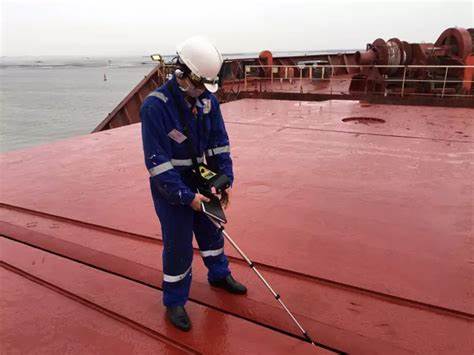
Ensuring the weathertight integrity of hatch covers is critical for protecting cargo from water ingress. While both ultrasonic testing (UT) and hose testing are used for checking hatch cover tightness, ultrasonic testing is widely considered the more reliable and efficient method. Here’s why:
1️⃣ Precision & Reliability
✅ UT detects even small leaks and poor compression that might go unnoticed in a hose test.
✅ Hose tests rely on visual observation, making it easier to miss minor leaks.
2️⃣ Dry Testing – No Risk of Cargo Contamination
✅ UT is a dry test, meaning no risk of water ingress into the cargo hold.
🚫 Hose tests use large amounts of water, which can contaminate sensitive cargo (e.g., steel, grain, paper).
3️⃣ Time & Weather Independence
✅ UT can be performed in any weather, even while loading or discharging cargo.
🚫 Hose tests require calm weather and more preparation time.
4️⃣ Detection of Poor Compression & Early Wear
✅ UT not only detects leaks but also identifies poor sealing and potential future problems.
🚫 A hose test only shows if water is actively leaking at that moment.
5️⃣ Compliance with Industry Standards
✅ Many P&I Clubs, insurers, and cargo interests prefer ultrasonic testing for hatch cover inspections.
✅ UT is often required for moisture-sensitive cargoes, ensuring safer transportation.
When is Hose Testing Still Used?
🔹 If UT equipment is unavailable.
🔹 When a quick check is needed after repairs.
🔹 If UT results are inconclusive due to background noise.
Conclusion
For most hatch cover inspections, ultrasonic testing is the superior method due to its accuracy, efficiency, and ability to prevent cargo contamination. Hose tests may still be used in some cases, but they are no longer the primary method for serious weathertightness checks.



